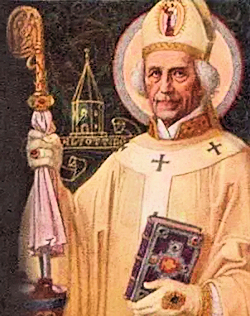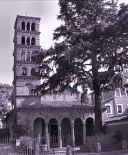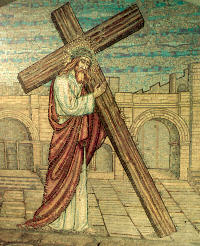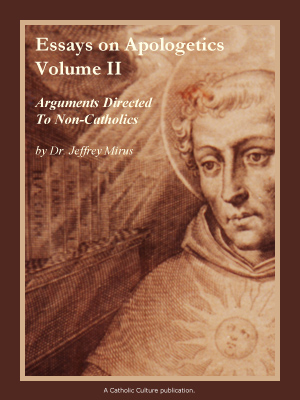Lent: March 27th
Saturday of the Fifth Week of Lent
Other Commemorations: St. Rupert, Bishop (RM)
» Enjoy our Liturgical Seasons series of e-books!
"There were many lepers in Israel at the time of Eliseus the prophet, and none of them was cleansed but Naaman the Syrian." Naaman's cure, an anticipatory figure of baptism, also declares in advance the universality of salvation. Naaman was the Syrian general who, in obedience to the commands of Eliseus, was cured of leprosy by bathing in the Jordan. At a later date Jesus Himself was to receive in the waters of the Jordan the baptism of John the Baptist. Let us always keep in mind that repentance and a humble confession of our guilt will draw upon us the mercy of God and infuse into our hearts the hope of pardon.
According to the 1962 Missal of St. John XXIII of the Roman Rite, today is the feast of St. John Damascene whose feast is celebrated in the current calendar on December 4.
St. Rupert of Salzburg
 St. Rupert was the first bishop of Salzburg, who, in some legends, is credited with giving the city its name.
St. Rupert was the first bishop of Salzburg, who, in some legends, is credited with giving the city its name.
Rupert was born in the late seventh century, to a part of the French imperial family. Little is known about his early life, but, like many sons of noblemen, entered the clergy. Rupert was elected bishop of Worms, a German city that was an important seat of power in the Carolingian dynasty.
At first, Rupert's flock welcomed his presence as a caring and faithful bishop. All too soon, however, the relationship between Rupert and the people of Worms soured. Conveniently, a Bavarian Duke, Theodo, asked for Rupert to come south to his palace at Regensburg to come spread Christianity to the diverse tribes he ruled over in Bavaria.
Rupert is often credited with baptizing Theodo, and officially welcoming him into the Church, as the seventeenth-century painting to the left depicts. And with Theodo's blessing, he began his missionary work among the Bavarian tribes.
Rupert found that Bavaria was still, in many ways, truly a wilderness with lots of outbreaks of violence. Thus, Rupert traveled to an old ruined Roman city and renamed it "Salzburg." Rupert founded and rebuilt several different monasteries in the area and lay the foundations of the Salzburg Cathedral. Where, a little over a thousand years later, Wolfgang Amadeus Mozart was baptized.
Rupert died in 710, and there's some dispute whether he had returned back to Worms at the time of his death or whether he died in Salzburg. His successor, Bishop Vergilius of Salzburg, interred his remains in the newly-finished Salzburg Cathedral in 774.
Rupert is known as the "Apostle to the Bavarians" and is a patron saint of Salzburg, Austria, and salt miners.
—Excerpted from Faith ND
Patronage: city of Salzburg, Austria; province of Salzburg, Austria; archdiocese of Salzburg; salt miners
Symbols and Representation: man holding a container of salt (refers to Salzburg and the salt mining there); wearing clerical clothes including mitre; holding a crosier
Highlights and Things to Do:
- Read more about St. Rupert:
- Read about St. Rupert's Fair, the biggest traditional fair in Europe.
- See the Stift St. Peter -- St. Peter's Abby that St. Rupert restored and lived.
- St. Rupert's remains are located at the Salzburg Cathedral at the Volksaltar.

Monday of the Fifth Week of Lent
Station with San Crisogono in Trastevere (St. Chrysogonus in Trastevere):
The Station, at Rome, is in the church of St. Chrysogonus, one of the most celebrated martyrs of the Church of Rome. His name is inserted in the Canon of the Mass. The church was probably built in the 4th century under Pope Sylvester I and one of the tituli, the first parish churches of Rome, known as the Titulus Chrysogoni.
For more on San Crisogono in Trastevere, see:
For further information on the Station Churches, see The Stational Church.








